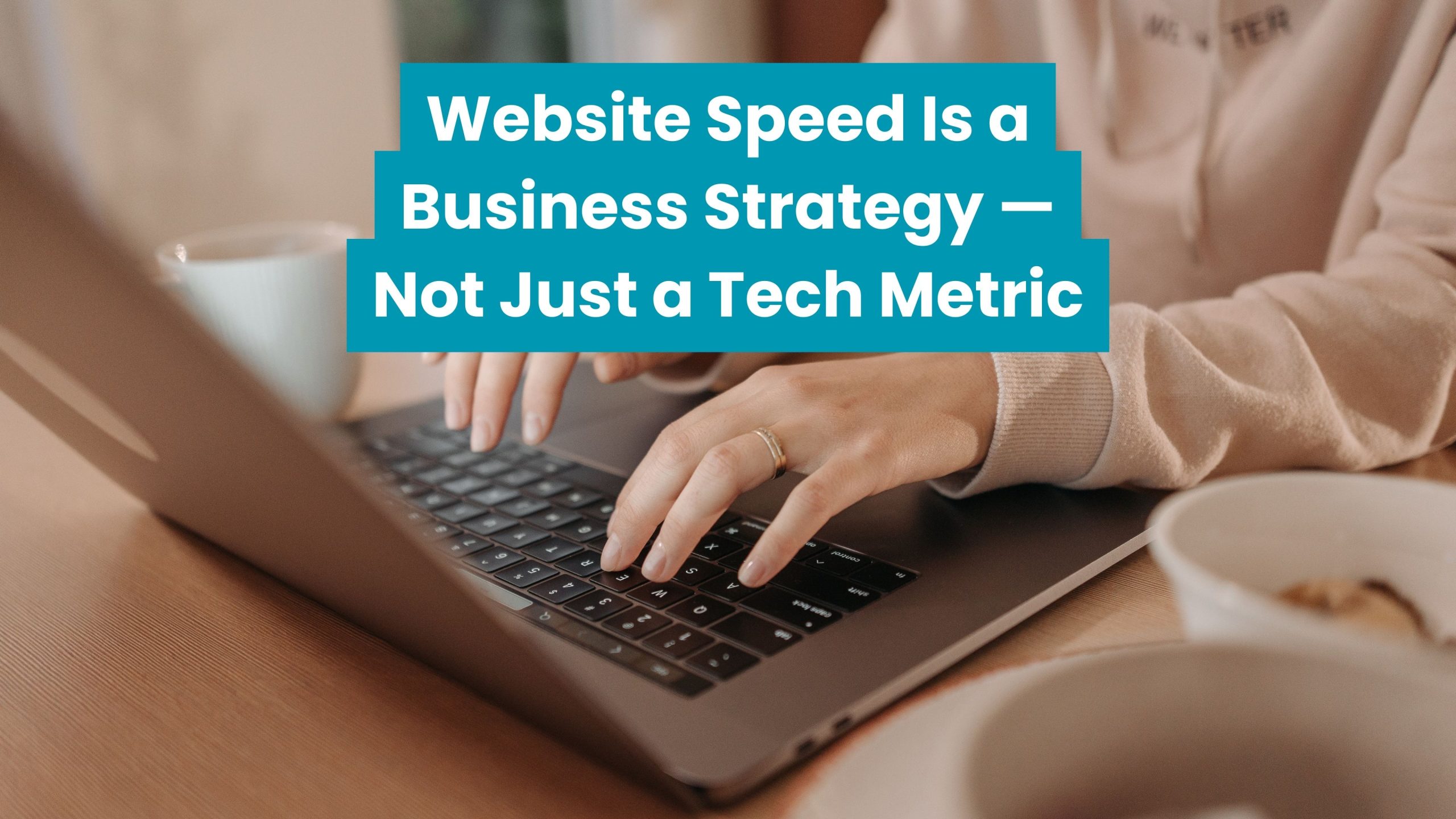Why Your Website’s Speed Is a Business Strategy—not Just a Tech Metric
Why Your Website’s Speed Is a Business Strategy—not Just a Tech Metric
Website speed isn’t just technical—it’s a business strategy. Discover why fast sites build trust, boost SEO, and grow South African brands.

In South Africa, where mobile data is costly and patience is short, every second counts. A slow website isn’t just a technical hiccup; it’s a business problem. Studies show that even a one-second delay in load time can reduce conversions by as much as 7%. That means fewer enquiries, fewer sales, and fewer opportunities for your brand to grow.
Website speed isn’t just about numbers in a report. It’s about the impression your business makes on potential customers. In a digital world where choice is unlimited, speed often makes the difference between winning a client and losing them to a competitor.
Why Speed Matters for South African Businesses
1. Mobile-First Country
Most South Africans access the internet on mobile devices. If your website isn’t optimised for speed on patchy connections, you’ll lose visitors before they even see what you offer. People won’t wait around for heavy images or bloated scripts to load.
2. Building Trust and Professionalism
When your website loads quickly, it signals that your business is efficient and reliable. A sluggish site, on the other hand, creates doubt: If they can’t get their website right, can I trust their service?
3. Search Engine Optimisation (SEO)
Google takes page speed into account when ranking websites. Faster sites are prioritised because they deliver a better experience. If your competitors’ websites load faster than yours, chances are they’ll appear higher in search results—and that directly impacts your visibility.
The Hidden Costs of a Slow Website
A slow website doesn’t just frustrate users; it has real costs:
- Lost Revenue: Every second of delay increases bounce rates. If your visitors leave before your site loads, you’re losing business opportunities.
- Reduced Engagement: Sluggish websites see fewer clicks, shorter sessions, and less interaction.
- Negative Brand Perception: First impressions matter. A slow site can make your business appear outdated or untrustworthy.
How to Improve Your Website Speed
You don’t need to be a developer to start improving performance. Here are practical steps every website owner can take:
1. Optimise Your Images
Large, uncompressed images are the number one cause of slow websites. Always resize images for web, compress them, and use modern formats like WebP.
2. Use Caching and a Content Delivery Network (CDN)
Caching stores website data so repeat visitors load pages much faster. A CDN distributes your content across global servers, reducing load times for visitors everywhere.
3. Minify and Defer Scripts
Remove unnecessary code, and ensure non-critical scripts load after the main content. This makes your site appear faster, even if background tasks are still running.
4. Choose Lightweight Themes and Plugins
Not all WordPress themes and plugins are created equal. Heavy, bloated templates with unnecessary features drag your site down. Opt for streamlined solutions designed for speed.
5. Keep Everything Updated
Outdated software not only slows performance but also creates security risks. Regularly update your WordPress core, theme, and plugins.
Baxtersweb’s Speed-First Approach
At Baxtersweb, I build websites with performance at their core. That means:
- Custom design without bloat — no unnecessary features weighing your site down.
- Performance testing with tools like Google Lighthouse and GTmetrix to ensure your website is optimised.
- Ongoing care so your website remains fast, safe, and effective long after launch.
A fast website isn’t just good practice—it’s a growth strategy. When users stay longer, explore your services, and trust your brand, the results show in more leads and more business.
Real-Life Example
One of my recent projects was for a South African business that needed a complete refresh. Their old site was image-heavy, slow to load, and failing to convert. By compressing images, implementing proper caching, and cleaning up unnecessary scripts, we reduced the load time from over 7 seconds to under 2 seconds. The result? Visitors stayed on the site longer, pages were more engaging, and enquiries increased within the first month.
Small changes made a big difference.
Final Thoughts
Speed isn’t a technical checkbox—it’s a business strategy. A fast website builds trust, improves SEO, and ensures your visitors have the best possible experience. In a country like South Africa, where data is expensive and patience is limited, optimising your website’s speed is one of the smartest investments you can make.
Call to Action
If you’re not sure how fast your website is, try running a free speed test using tools like GTmetrix or Google PageSpeed Insights. If the results look overwhelming, don’t worry—that’s where I come in.
👉 Let’s talk about how we can make your website faster, stronger, and ready to grow your business.


